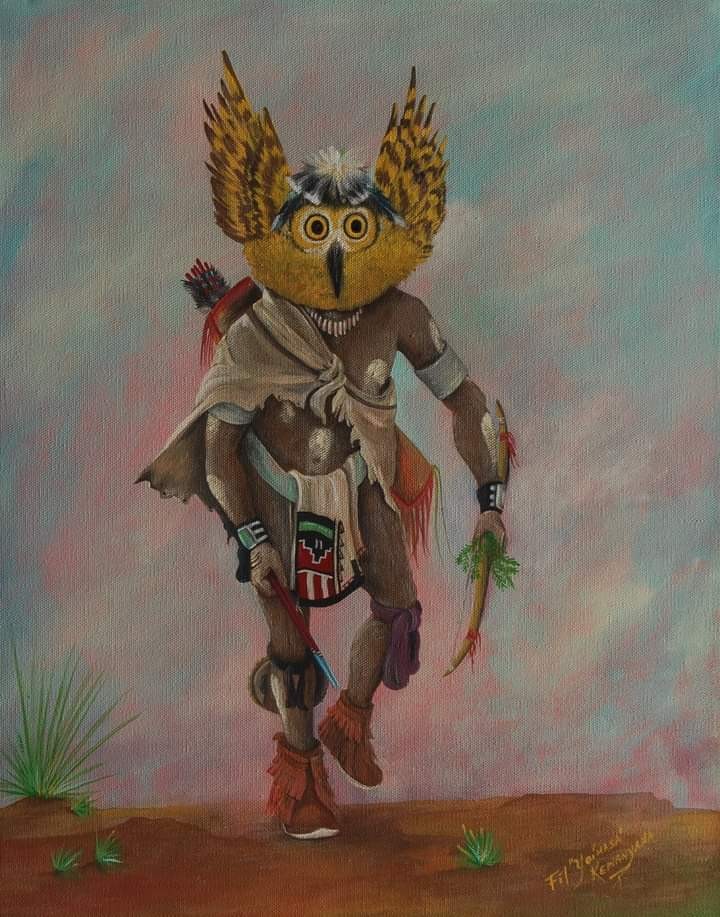We’re excited to introduce you to the always interesting and insightful Filmer Kewanyama. We hope you’ll enjoy our conversation with Filmer below.
Filmer, appreciate you joining us today. What’s been the most meaningful project you’ve worked on?
As my artist statement says, with my art it helps me to teach non-Hopi or non-native people on who we are as Hopi People. In the past few months I have painted two large murals (1) at a museum stressing the importance, the sacredness of water and the other (2) at an archaeology center about our emergence story, of how we came to be. These again help me to teach non-Hopi to have a better understanding of our way of life and how our ceremonies are still sacred and important to us.





Filmer, before we move on to more of these sorts of questions, can you take some time to bring our readers up to speed on you and what you do?
First off I did not get into the art profession until after I had retired from my first job as a soldier in the United States Army. I served for 21 years, it was after that that I decided to pursue the Hopi art that I had learned from my parents growing up. As I pursued my Graphics Design degree I moved into the Fine Arts area and became a painter of mostly what I called Hopi art. I consider myself to be an artist in different mediums as I’m a painter, a sculptor, mixed media artist, digital artist… currently I exhibit my works at some of the local museums, art galleries and I am also represented by Cactus Wren Art Gallery in Tubac, Arizona. I also share my works on Instagram.
For you, what’s the most rewarding aspect of being a creative?
I am sometimes asked to give art presentations on my form of artworks and on the history of our people. It is very rewarding when I get asked a lot of questions about our way of life; when people want to know more. I also work seasonally as a road scholar guide soI also talked about the history of our people at ancient sites. Very rewarding when people have an interest in wanting to learn about us and to visit us on Hopi land.





Have any books or other resources had a big impact on you?
I started working towards my Association of Applied Science (AAS) for graphics designing at Yavapai College in Prescott, Arizona that was one thing that really helped me to branch myself out and to get involved in the art business in a lot of different avenues. I was asked to manage the college art gallery so that also helped me to learn much more. I have been selected on numerous Boards of Directors for art galleries in the local areas.
Contact Info:
- Website: Cactuswrenart.gallery
- Instagram: Instagram @ Filmer Kewanyama
- Other: [email protected]



1 Comment
Terri Hill
Thank you for this article. I first met Fil Kewanyama at the Museum of Indigenous People in Prescott, back when it was called the Smoki Museum. As a volunteer, I soaked up all the information I could access. Fil was on the museum board and presented fascinating programs about Hopi history and culture. I have several of his prints in my art collection. Both Fil and the MIP are extraordinary assets to Prescott, Asquali.